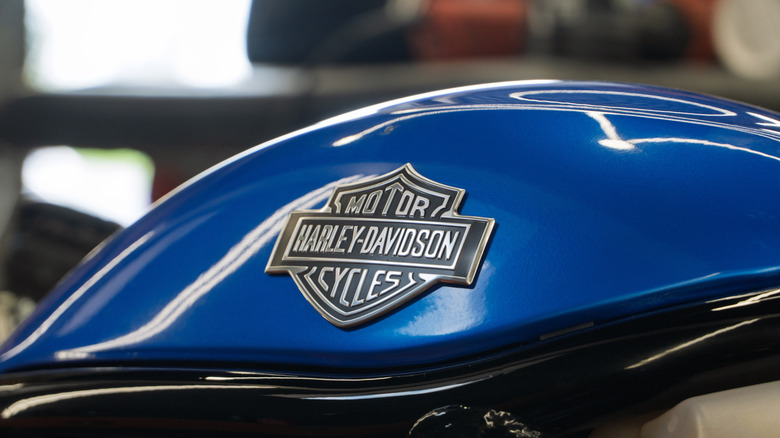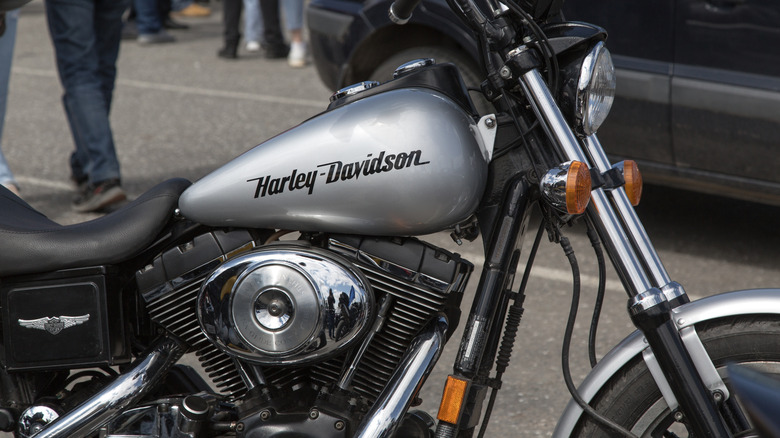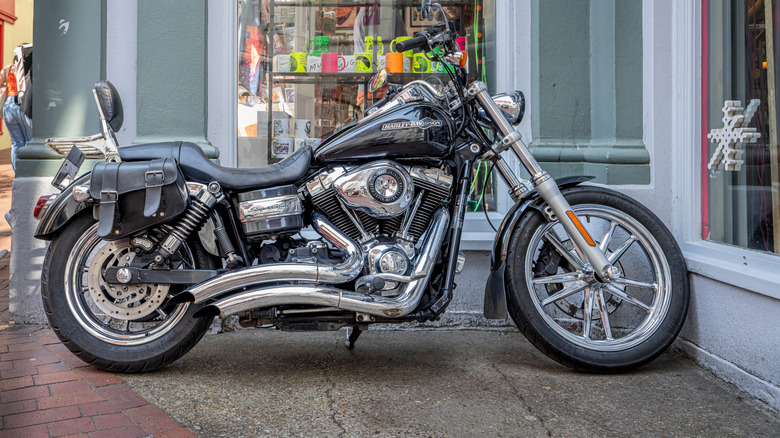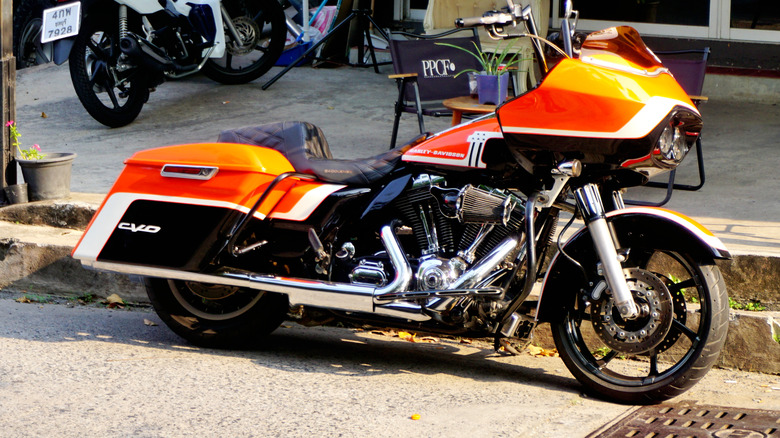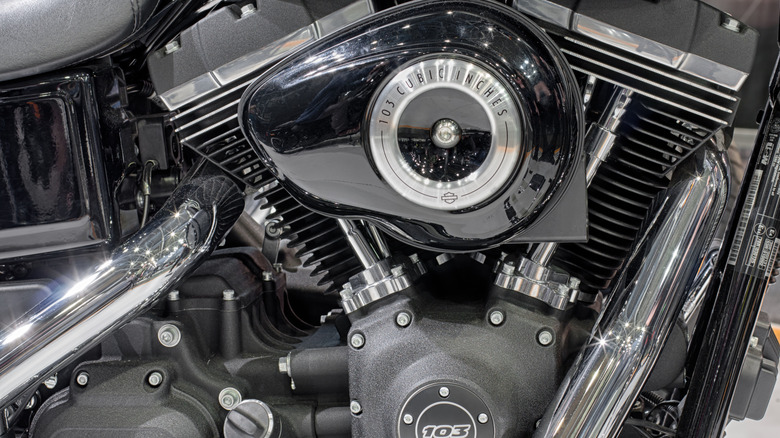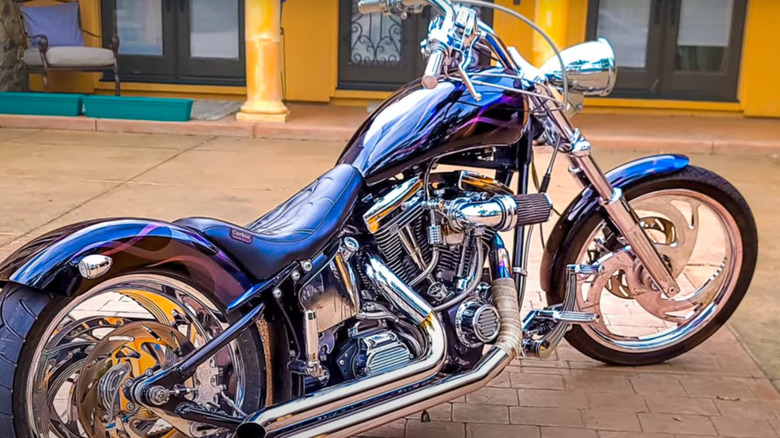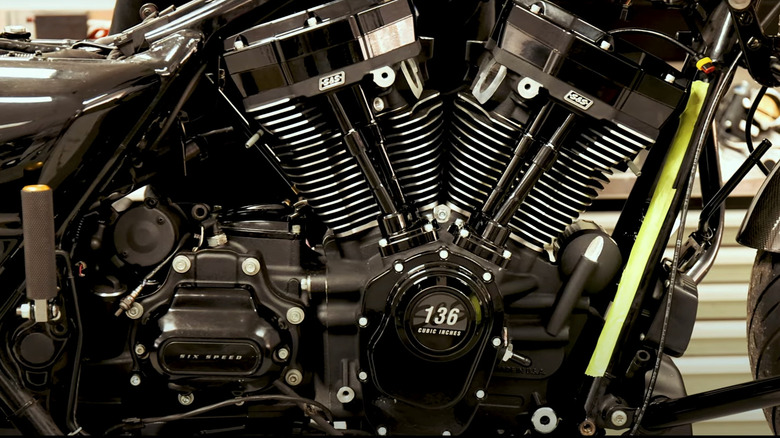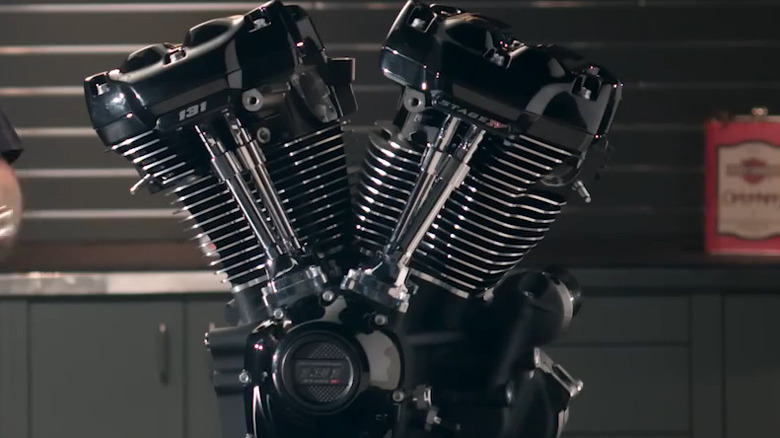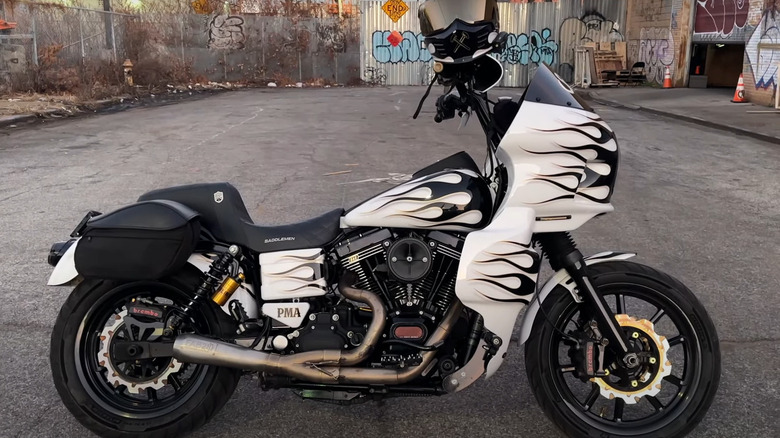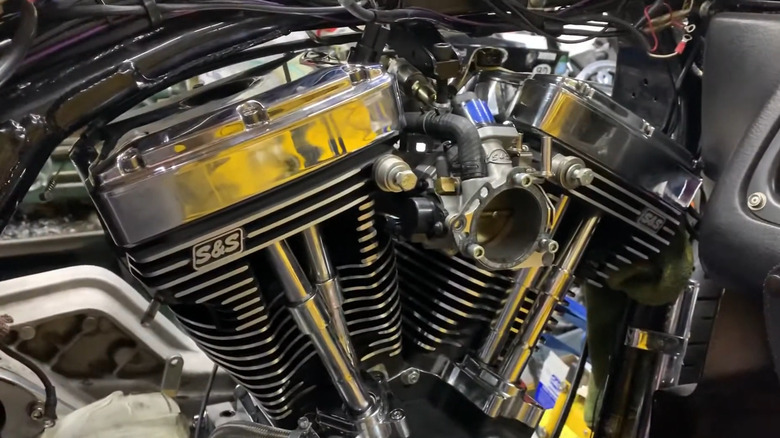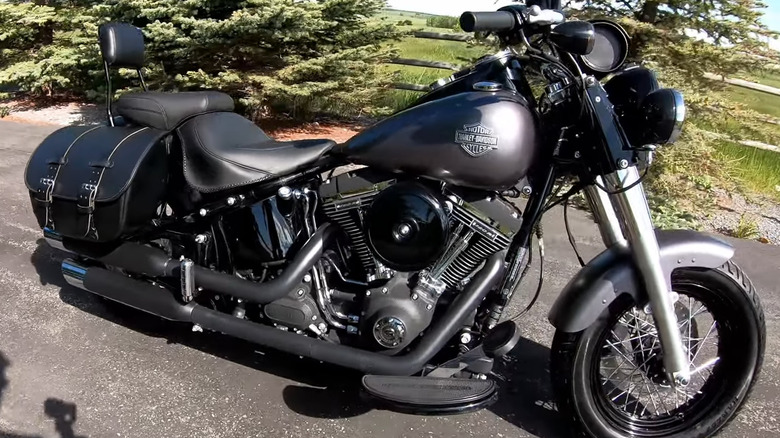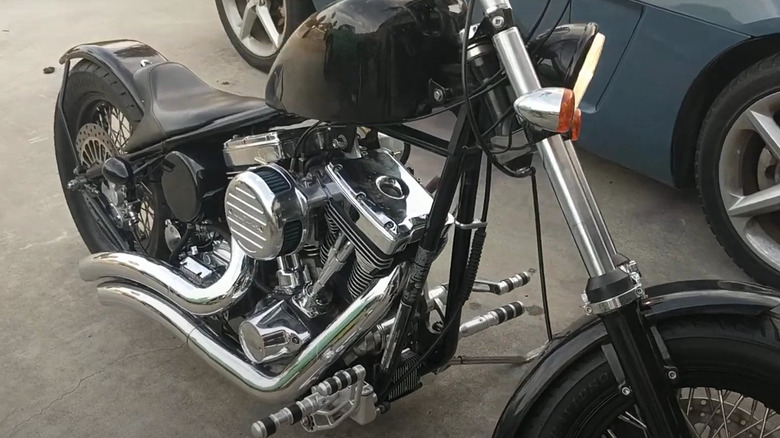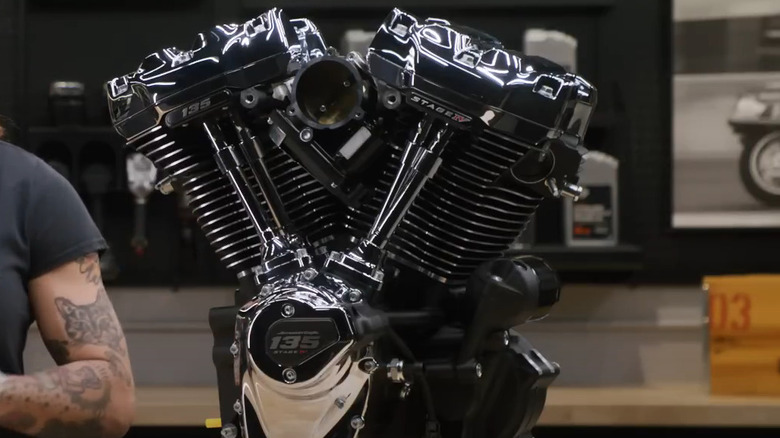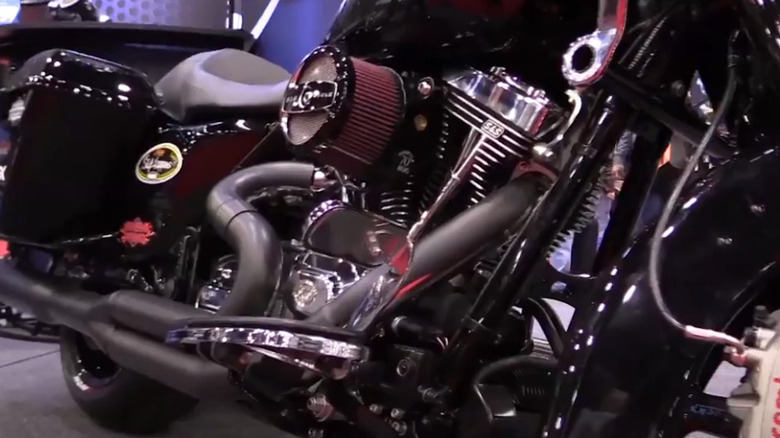13 Of The Most Powerful Harley-Davidson Crate Engines, Ranked By Horsepower
Throughout the history of Harley-Davidson, there have been a great many engines offered across various models. And for decades, these engines have presented buyers with a rather unique issue. In terms of stock units, every Harley-Davidson engine ever built sounds glorious and runs forever, but they tend to feel underpowered to some, especially on the heavier bikes from the Harley-Davidson CVO series, like the 2025 CVO Road Glide RR. On the other hand, customized builds with upgrades could extract (for want of a better word) serious power from the bike, but this was expensive and almost always voided any sort of warranty the model came with. Towards the end of the last century, crate engines began to solve this problem with typical American directness.
Just bolt in more power and stop complaining. Today, there are a huge number of options to choose from, such as those from Ultima and S&S and the in-house Harley Screamin' Eagles lineup that comes with warranty. There is also the Harley-Davidson Longblock program, which offers engine rebuilds for classic models, along with optional power and displacement upgrades to those classic engines.
Whether you're rebuilding a classic that's finally given up the ghost or simply want your bike to accelerate like it's being chased by angry creditors, crate engines deliver without the drama. With that said, here are 13 of the most powerful Harley-Davidson drop-in engines currently on the market.
13. Longblock 88
The Longblock program, as we mentioned, is Milwaukee House's official engine refitment and rebuild program. They provide drop-in engines for (mostly) discontinued models that will be reaching the end of their usable lifespan. Currently, the oldest model that they offer rebuilds for is the Twin Cam 88, which was introduced way back in 1988. It was quite revolutionary for its time, displacing 82 cubic inches across two cylinders, featuring belt final drive. This engine made 67 hp and 81 lb-ft of torque, was mated to a five-speed transmission, and was available in a number of models.
The Longblock rebuild program supports Harley-Davidson Softail models made between 2000 and 2006, Dyna units made between 1999 and 2005, and Touring models produced between 1999 and 2006. It is worth mentioning that when optioning a rebuild for the Twin Cam 88, displacement upgrades are available to 95 ci or 103 ci, depending on model. However, to be eligible for the displacement upgrades, the bikes would have needed a big bore upgrade from before the rebuild. Additionally, the displacement upgrade would require a separate ECM calibration that isn't included in the price of the rebuild. As things stand, the stock Longblock 88 rebuild would make the same power figures as the original Twin Cam 88, which is 67 hp.
12. Longblock 95
The Twin Cam 95 is the next step up from the Twin Cam 88 that we just covered above. In addition to more displacement across the same two cylinders, the power has also been upped on the 95, now making upwards of 75 HP reliably. In fact, what not many people realize is that the Twin Cam 95 wasn't an actual engine, but rather a big bore upgrade applied to 88 ci models to increase the displacement by widening the bore, and thus adding more horsepower. Now, the jump from 75 from 67 hp might not seem like much, but on a percentage basis, that's an almost 11 percent gain, which would certainly be noticed by the rider once the upgrade was complete.
As mentioned above, the 95 ci upgrade would be offered to all the 88 ci models that came in for refitments. In addition to those models, the 95 ci Longblock would also be offered on EFI Softails produced from 2001 to 2006, on Touring units made between 2002 and 2006, and on Dyna models from 2004 through 2005.
Furthermore, it should also be noted that under the Longblock program, units that were manufactured around the early 2000s would get their Timken output bearings upgraded to newer, more durable roller type bearings. Note that getting the bearings changed would require an adjustment of the shaft spacer on the output shaft sprocket.
11. Screamin' Eagle 110
For those hearing the name "Screamin' Eagle" for the first time, here's a quick summary: Harley probably noticed that a lot of people were upgrading or replacing their stock engines. Harley then probably decided that they wanted a piece of that pie, so they launched their Screamin' Eagles line. Note that drop-in crate engines from Screamin' Eagles launched in 2012, before which they were just stage upgrades. Just like the Longblock program, these provide either upgrades or complete drop-in-and-go crate engines for several Harley-Davidson models.
The 110 Twin Cam was one of the earliest Screamin' Eagle models that was available for purchase, and was compatible with lines such as the CVO, which stands for Custom Vehicle Operations. In terms of power figures, it was pretty decent for the time, coming in at 90.5 hp, alongside 109 lb-ft of torque. Later models could produce up to 115 lb-ft of torque.
The Screamin' Eagle 110 Twin Cam was meant to be an upgrade from the Twin Cam 103, which displaced 103 ci to produce around 100 lb-ft of torque. So, while the power figures for this crate engine might seem relatively modest compared to what's about to come, it was still pretty mind-boggling for the time to have 90 ponies powering just two wheels.
10. Longblock 103
While not strictly a crate engine per se, the Twin Cam 103 was eligible to receive various different upgrades from Screamin' Eagle workshops. These ranged from a minor stage I tune, all the way up to the extreme stage IV big bore upgrade. When equipped with the stage IV package, the modest Twin Cam 103 could produce up to 103 hp alongside a whopping 110 lb-ft of torque. What's more, peak torque was available from 6,000 RPM, and peak hp was present way down low, from an impressive 3,500 RPM. This meant that after the stage IV upgrade, the bike it was fitted to would not only be faster, but also quicker — and there's an important distinction to be made there.
Tunes tend to sacrifice quickness for higher top end speed, or vice-versa. The fact that the mad hatters at Screamin' Eagle managed to do both while maintaining the factory warranty is downright impressive. Yes, you read that right. If the motorcycle was upgraded at a licensed shop or dealer, and only Screamin' Eagle OEM parts were used, then the warranty that came with the motorcycle would be honored. No more waiting five years to tune modern Harley-Davidsons for fear of voiding the warranty terms. It was really a win all around, except for the costs involved probably.
9. Ultima El Bruto 113
The first entrant on our list that is not from Harley-Davidson itself, but is the Ultima El Bruto 113. When an engine is named "El Bruto", that should tell buyers everything they need to know about that power unit. It's pretty American in the sense that it simply makes everything bigger with more power — specifically, the displacement is now 113 ci (1,852 cc) across the same two cylinders. Other internal components have also been upgraded to handle the stress load that the higher displacement would ultimately add, with the total power output now sitting at 120 hp and 120 lb-ft of torque.
There is also the commendable fact that this engine simply looks amazing with its spaced out V-twin rumbler configuration. The El Bruto 113 was meant to be a drop-in engine on any Harley bike that had one of the big twin engines made between 1984 and 1999. When new, an Ultima El Bruto 113 would have run buyers something astronomical. Now, moderate-mileage units are now appearing on the secondary market for about $4,600, which is a far more realistic and reasonable price. Remember, that's the price for just the engine.
8. S&S MK136 M8
The MK136 M8 is another very popular crate engine that was made specifically for Harley-Davidson models towards the turn of the last decade. A unique feature of the MK136 M8 was the fact that it was extremely tunable, kind of like the 1JZ and 2JZ Toyota engines in cars. This was probably a large factor in its popularity, and the M8 was designed to fit into Harley touring models made from and after 2017. The engine that it was (mostly) supposed to be an upgrade from was the Harley-Davidson Milwaukee Eight 107 that displaced 107 ci across two cylinders, and produced 87 hp alongside 111 lb-ft of torque.
In contrast, the S&S MK136 M8 displaced 136 ci (2,229 cc) across the same two cylinders, and had a high-flow cylinder head system. Also, readers should note that power figures for the M8 reportedly varied widely depending heavily upon the type and style of cams that were fitted to the engine. However, road-legal cams installed on the M8 would produce a power output of 122 hp, alongside a whopping 144 lb-ft of torque. This was almost unthinkable back then — that's almost as much power as an econobox car — on a motorcycle.
7. Screamin' Eagle Milwaukee-Eight 131
A fairly modern unit that was released not too long ago is the Milwaukee-Eight 131, which came out in 2020. It was mainly intended to be an upgrade for the 114 engines from Milwaukee House, and what an upgrade it was. Where the original 114 made 93 hp alongside 119 lb-ft of torque across two cylinders via chain final drive, the Screamin' Eagle 131 came in with an increase of about 45 percent in terms of hp. It had power output figures that would have seemed impossible a decade ago, coming in at a displacement of 131 ci (2,147 cc), which gave the SE 131 a colossal 132 hp from 4,000 RPM and about 126 lb-ft of torque from 5,500 RPM.
Other notable upgrades to the SE 131 (in addition to the power and displacement) were high-lift cams, better fuel injectors, and high-durability increased-strength tappets and bearings to handle the additional load. All 131 engines are assembled at Milwaukee House's Powerhouse operations center in Milwaukee, Wisconsin. Lastly, each unit will also ship with a years' warranty that covers manufacturing defects, for that added peace of mind.
6. S&S V124
For those wondering, "S&S" is one of the oldest and most legendary motorcycle manufacturers in the world — even if they are known best for their Harley crate engines today. When the company was founded, the abbreviation stood for Smith & Stankos, in a reference to the surnames of the two founders. However, once Stankos left the business altogether, the name changed to Smith & Smith. Today, S&S Cycles makes some of the best high-performance motorcycle parts and engines available on the market, and one of the most sought-after units is their V124. It displaces 124 ci (2,032 cc) across two cylinders, and delivers the power to the rear wheel via a lot of low-down torque.
In terms of power figures, it makes a total of 128 hp and 133 lb-ft of torque, most of which is available from 4,500 and 5,000 RPM, respectively. Designed to fit into bikes with the Harley-Davidson Evo engine from 1984 or later, the engine is supposedly one hell of an upgrade to the feel of the bike. And there's a good reason for that; given that the S&S V124 makes about 100 percent more power than the standard Harley-Davidson Evo engine that it is intended to replace.
5. S&S T124LC
Very closely related to the V124 from S&S that we just covered above is the T124LC, which also has a displacement of 124 ci across the same two cylinders, with some upgraded durability components. The main difference is that the T124LC is more focused on touring (that's what the T stands for) and has a lower compression ratio (abbreviated to LC) when compared to the V124. The lower compression ratio gives riders a lot more flexibility when it comes to their choice of fuels and causes less stress on the engine over riding distances. However, the downside to the longevity and endurance of the T124LC is the drop in performance.
Granted, since it's a newer engine, the T124 makes about 4 more hp than its V-series counterpart, coming in at 132 hp from 5,750 RPM and 134 lb-ft of torque at 3,700 RPM (both RPM values approximated). The fact remains that the V124 is better suited for performance applications. Key features on the T124LC include S&S 5-8-5 cams, a two-into-one exhaust system, and a compression ratio of 10.2:1 versus the 10.8:1 compression ratio on the V124.
4. Screamin' Eagle SE120R
One of the most powerful Harley-Davidson crate engines is one that came out a while ago, in the form of the SE120R. This behemoth (for the time, anyway) displaced 120 ci (1,966 cc) across two cylinders laid out in the classic v-layout that has become symbolic of Harley-Davidson motorcycles. The R at the end of the name is said to have stood for racing, which shows that it was a performance engine.
In terms of power, the SE120R made an eye watering 135 hp, and supplemented that with 128 lb-ft of torque from just 5,000 RPM. However, it should be noted that to get the maximum horsepower out of the SE120R, other upgrades will also have to be invested in, such as (but not limited to) better carburetors, preferably high-flow units, or better injectors and throttle bodies, along with an exhaust tune at the bare minimum. Many owners would also perform a lot of other upgrades which could potentially give this beast even more power.
3. Ultima El Bruto 127
The upgraded version of the El Bruto engine that we covered towards the beginning of the article ups the displacement to 127 ci (2,081 cc), across much of the same components. The result is an increased power output, up to 143 hp and 154 lb-ft of torque from the 120 hp and 120 lb-ft found on the El Bruto 113.
A recent development with the El Bruto line from Ultima is the fact that now, El Bruto engines are diamond cut from the factory before they ship. Earlier, this wasn't the case, and customers were forced to buy the unassembled engine, or disassemble a ready engine, and then send the parts to be diamond cut. The main benefit of diamond cut parts is that they cool better and look shiny. By having the El Bruto competition series be diamond cut from the warehouse cuts out a very time and resource-intensive step from the process.
2. Screamin' Eagle 135CI Stage IV
Not to be outdone by some outsider making engines for their motorcycles, Harley-Davidson released the Screamin' Eagle 135 in 2023. The monster of a powerplant displaces 125 ci (2,212 cc) across a V-twin cylinder layout and moves the rear wheel via the standard transmission on the donor engine. Other changes to the SE 135 include custom badging, a new timer cover, CNC cylinder heads, a 68mm intake manifold, high lift cams, and high compression pistons, among many other things. These changes result in the SE 135 making 144hp and 149 lb-ft.
However, remember that these figures are for the Screamin' Eagle 135 that ships with the stage IV tune, which is not something that every owner would opt for. Sure, the power and low-down grunt from the torque-y engine are nice, but they would put a lot of additional stress on other components such as the frame, brakes, tires, and other consumables such as wiring, piping, and liquids. Then again, there's just something different about having 144 hp on tap at the slightest touch of the throttle.
1. S&S T143
The most powerful crate engine for a Harley-Davidson motorbike at the time of writing also comes from S&S Cycles who've counted for a number of other entries on this list. It is called the T143, where the T refers to the touring designation, and the 143 is the displacement, coming in at 143 ci (2,343 cc). This behemoth of an engine is apparently the biggest crate engine that can fit in a Harley without cutting into the chassis. In terms of power figures, the T143 makes a whopping 162 hp, alongside 152 lb-ft of torque from decently manageable RPMs.
The engine is so powerful that even the manufacturer tells prospective buyers that the T143 comes with various grades of side effects, such as a vibrating engine, reduced longevity (which is to be expected), and worse throttle sensitivity. The two main colors that it was available in were grey and black, both of which looked remarkable from any angle. Back in 2014, it retailed for $9,250, which would be a dream of a price today. All in all, it's a fantastic engine, the likes of which will probably not be seen again with increasingly stringent emissions and environmental regulations.
